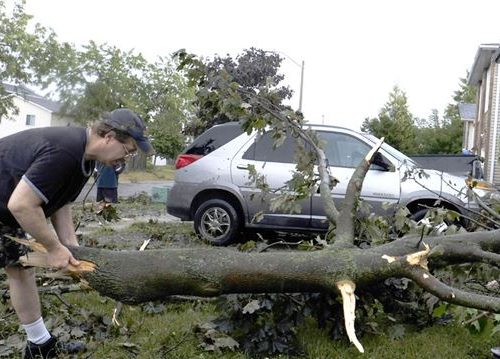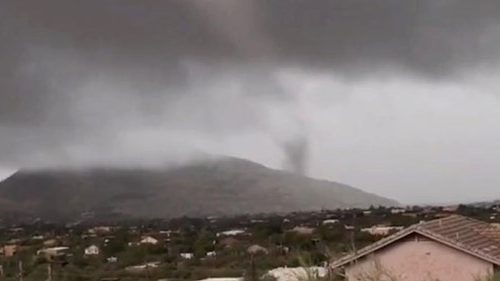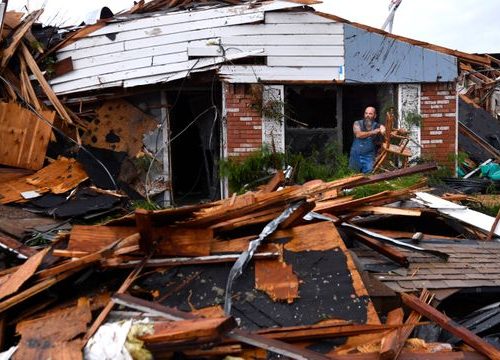A tornado may cause localized destruction, but the most severe problems come when a storm system spawns multiple tornadoes. This creates what’s called a tornado outbreak, which spreads destruction across a wider area. Now, a new study suggests that the most violent tornado outbreaks are on the rise. But the researchers behind the study see no indication that the rise in tornado outbreaks is connect with our warming climate.
It would make sense for a warming climate to influence tornado activity. After all, higher temperatures mean more energy in the atmosphere, potentially powering the storms. But past studies have produced mixed results when it comes to tornado activity. There’s not a significant trend in the number of tornadoes or the frequency of outbreaks (defined as six or more tornadoes that occur in rapid succession). At the same time, tornadoes are occurring in more of the year, and the number of tornadoes in outbreaks has become increasingly variable.
A team of researchers from Columbia University (Michael Tippett, Chiarra Lepore, and Joel Cohen) decided to look at this last figure more carefully. They collected data on the number of storms in outbreaks in the period between 1965 and 2015. While there was no trend in the number of outbreaks, the number of tornadoes per outbreak has gone up across that time period. Not only was the mean number of tornadoes per outbreak going up, but the more extreme outbreaks—the ones with the most storms—were increasing the fastest.
So the authors formally defined an “extreme outbreak” as an event that spawns a dozen tornadoes or more. There were 435 of these in their study period, but there was no indication of a statistically significant increase over that time. They next divided those 435 events into groups representing different percentages of severity (again, measured in the total number of tornadoes per outbreak). With this data, the authors saw a clear trend: the most extreme outbreaks have gone up over this period.
While the trend wasn’t extreme, it added up over time. “The estimated number of tornadoes in the 5-year most extreme outbreak roughly doubles from 40 in 1965 to nearly 80 in 2015,” the authors note.
The authors then checked whether correlations with known climate cycles, like the Pacific Decadal Oscillation, could explain the changes. That didn’t work out. It also didn’t match an atmospheric change that’s been driven by rising temperatures. What did show a relationship was a specific measure of atmospheric wind shear, but that measure hadn’t been previously linked to the climate.
The authors argue that this association with wind shear also means that the trend isn’t likely to lead to meteorologists having an improved ability to identify tornadoes. But they also note that many of the outbreak measures that they’re excited about dropped to their lowest level in a decade last year. So, while the trend is significant, we may want to revisit it in a few years.
Science, 2016. DOI: 10.1126/science.aah7393 (About DOIs).
JOHN TIMMER – 12/4/2016, 12:00 PM





